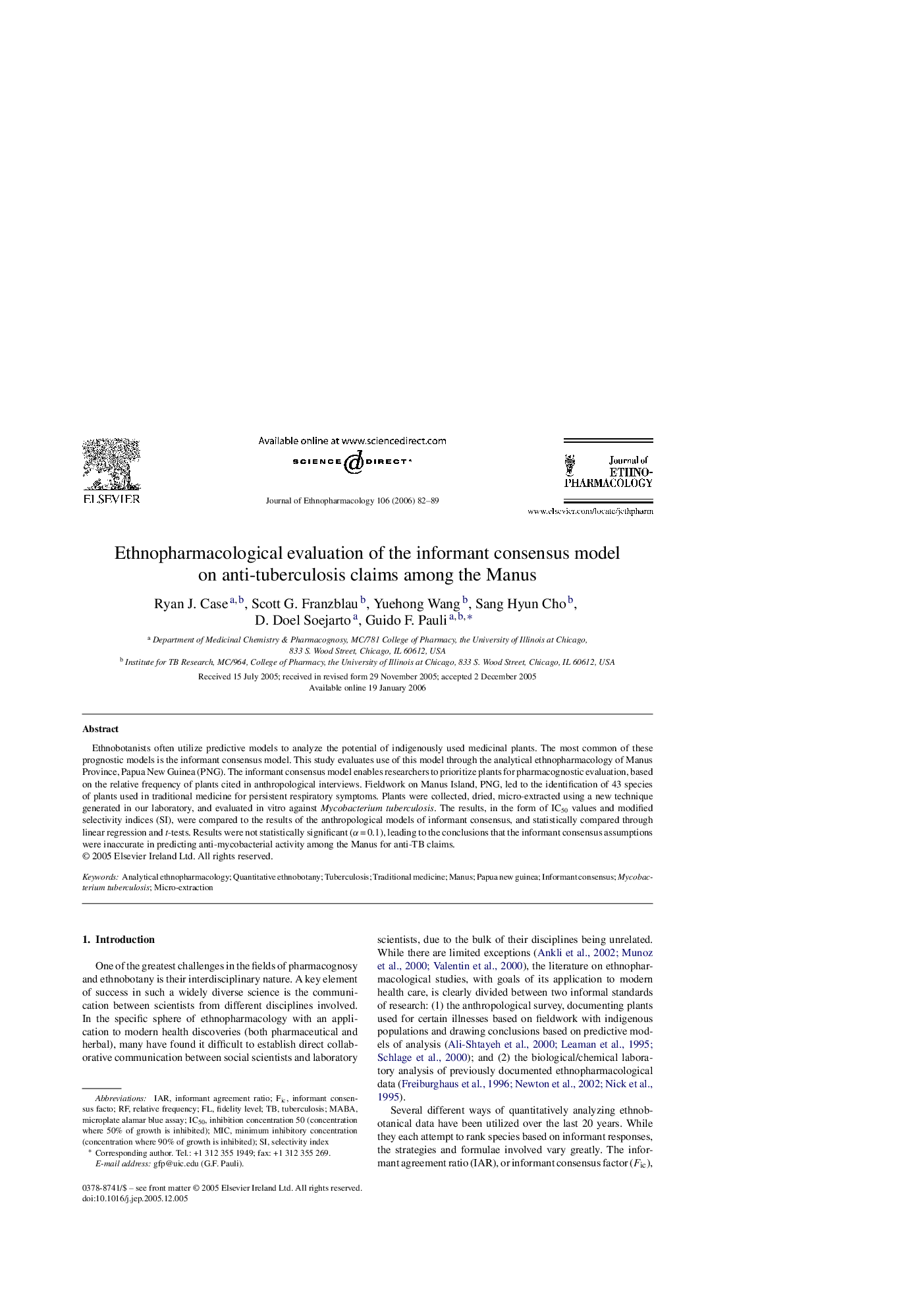| Article ID | Journal | Published Year | Pages | File Type |
|---|---|---|---|---|
| 2548587 | Journal of Ethnopharmacology | 2006 | 8 Pages |
Ethnobotanists often utilize predictive models to analyze the potential of indigenously used medicinal plants. The most common of these prognostic models is the informant consensus model. This study evaluates use of this model through the analytical ethnopharmacology of Manus Province, Papua New Guinea (PNG). The informant consensus model enables researchers to prioritize plants for pharmacognostic evaluation, based on the relative frequency of plants cited in anthropological interviews. Fieldwork on Manus Island, PNG, led to the identification of 43 species of plants used in traditional medicine for persistent respiratory symptoms. Plants were collected, dried, micro-extracted using a new technique generated in our laboratory, and evaluated in vitro against Mycobacterium tuberculosis. The results, in the form of IC50 values and modified selectivity indices (SI), were compared to the results of the anthropological models of informant consensus, and statistically compared through linear regression and t-tests. Results were not statistically significant (α = 0.1), leading to the conclusions that the informant consensus assumptions were inaccurate in predicting anti-mycobacterial activity among the Manus for anti-TB claims.
